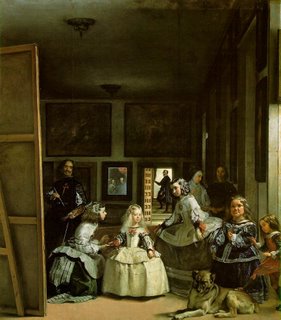Class II: Basic concept-representation

Representation (再現/呈現) (Hall: 1997)
Basic concepts of representations
- the production of meaning through language (sign as the basic unit):
1.“to describe or depict it, to call it up in the mind by description or portrayal or imagination.”
2.“to symbolize, stand for, to be a specimen of, or to substitute for.”
system of concepts language (sign)
Things system of concepts
(~ can we think without language?)
- Three different accounts or theories:
1.Reflective approach: “meaning is thought to lie in the object, person, idea or event in the real world, and language functions like a mirror, to reflect the true meaning as it already exists in the word.”
2. Intentional approach: “it is the speaker, the author, who imposes his or her unique meaning on the world through language.”
*3. Constructionist approach: “things don’t mean: we construct meaning, using representational systems – concepts and signs” (e.g. the language of traffic lights)
(> structuralism)
Ferdinand de Saussure: linguistics
- sign: The signifier: The form (the actual word, image, photo, etc.)
The Signified: Concept in your head with which the form was associated (e.g. sound image)
- arbitrary (determined by cultural & linguistic code; no essential meaning) - meaning marked by difference, e.g. binary opposition”
- language: Langue (the language system, ‘deep structure’)
Parole (speech acts, ‘surface’ of language)
structuralism: deep structure of language - “language speak us”
~ Saussure is a linguist, social production of meaning is not his major concern
Roland Barthes (semiotics ; post-structurist):
- From language to culture: linguistics to semiotics
-the general approach to the study of signs in culture
e.g.TV dramas: soap opera as a genre; Clothes: dress code
- Primary level of signification:
- “Denotation is the simple, basic, descriptive level, where consensus is wide; and most people would agree on the meaning,
- Connotation - enters “a wider, second kind of code which connects them to broader themes and meanings, linking them with what, we may call the wider semantic fields of our culture; interpret the completed signs in terms of the wider realms of social ideology
- semantics (meaning of words) >< syntactic syntagms (word order & consequence of menings) >< paradigmatic (words actually in speech context)
e.g. It is a pen. He is a man.
- Myth: "Myth Today"
~ semiotics seems to be a ‘close system’ and the subject (human individual) is displaced from the centre
~ interpretative approach to culture: culture as text ( culture as text and study of culture as series acts of interpretations- further, see Clifford Geertz, The Interpretation of Cultures, 1973.)
Foucault: Discourse
- From Language to discourse:
- culture, meaning depend on a larger units
- Discourse as a system of representation:
• “Normally, the term 'discourse' is used as a linguistic concept. It simply means passages of connected writing or speech. …What interested [Foucault] were the rules and practices that produced meaningful statements and regulated discourse in different historical periods.”
• “The same discourse will appear across a range of texts, and as forms of conduct, at a number of different institutional sites within society. 'However, whenever these discursive events 'refer to the same object, share the same style and ... support a strategy... a common institutional, administrative or political drift and pattern' (Cousins and Hussain, 1984, pp. 84-5), then they are said by Foucault to belong to the same discursive formation.”
- “Meaning and meaningful practice is therefore constructed within discourse.”
- Linguistic & extralinguistic:
- Historicizing discourse: discursive practices: “Things meant something and were 'true' only within a specific historical context”
e.g 仆街 / 踢波
- From discourse to power/knowledge
- discourse, power and knowledge (truth), subject
- power determine the meaning, not language: “nothing meaningful outside the discourse”
- practice of meaning: acts > actor> subject (sexuality)
- institutional apparatus & technologies: regulation of conduct (govermentality)
- knowledge & power: make itself truth
- power relations: not single source of power in one direction, but circulation, a productive network (induce pleasure)
e.g. Panopticon
Subject
What is the subject in this painting?
Diego Velasquez, Las Meninas, 1656, Spain
- Representation works as much through what is not shown, as through what is
- Meaning (of the painting), determined by the subject position one subjugate/ subject to (oscillation)
- Sovereign: master of all surveys: subject of and subject in the painting
- subject (主體): subjected to discourse, i.e. the bearer of knowledge (subjugate) or object of knowledge (subject to)/ subject position: personify of power in knowledge
~ “power-knowledge” is not only exercising in our social realm, but on “scientific knowledge” in academia as well as ordinary life
~ Marxist’ class struggle tends to reduce power into a one directional oppression

0 Comments:
Post a Comment
<< Home